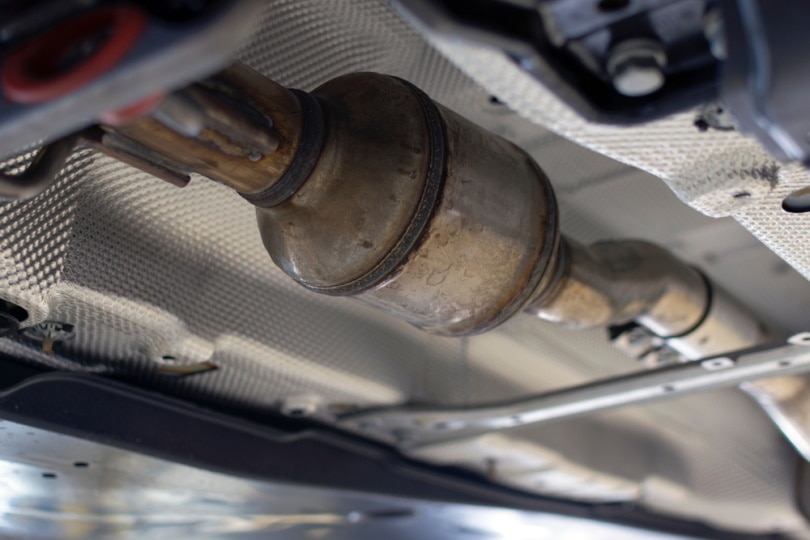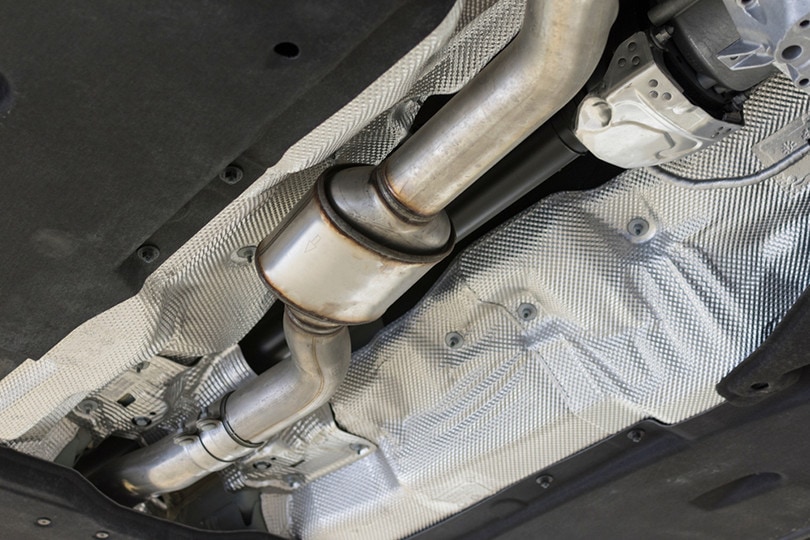Can You Clean a Catalytic Converter? Step-By-Step Guide
-
Pete Ortiz
- Last updated:

Catalytic converters are responsible for controlling and reducing any harmful pollutants that are produced by your car while you’re driving. Pollutants such as carbon monoxide and other harmful gasses are converted to less harmful emissions that are then passed through your exhaust pipe and to the atmosphere. However, for your catalytic converter to function effectively and efficiently, it’ll need to stay clean.
Often, you’ll become aware of a clogged or dirty catalytic converter when your vehicle either fails an emission test, the car’s “Check Engine” light illuminates, or starts to show signs that the converter is clogged. These signs can include stalling, sputtering, or sulfur-like smells coming from the bottom of the car.
You may be surprised to find that cleaning your catalytic converter is a fairly straightforward process and one that you can do yourself–without a mechanic. This can, in turn, save you anywhere from $100-$200 in service costs, depending on where you live. Continue reading to learn how to clean your catalytic converter.
Step-By-Step Guide to Cleaning Catalytic Converter
Before preparing to clean your catalytic converter, take a look at your car’s user guide to be sure that it’s okay to perform this task yourself. Some vehicle manufacturers may recommend that you only have this task done by a licensed mechanic, and others may advise that you not do it at all–it’s always best to be on the safe side.
1. Buy A Catalytic Converter Cleaner
One of the easiest and quickest ways to clean your catalytic converter is to use a catalytic converter cleaner. Different vehicle models will require different types of cleaners, so be sure to find one suitable for your vehicle’s engine specifically. A couple of the most popular cleaner options are Cataclean and OXICAT. These particular cleaners will clean your converter as well as the O2 sensors and the entire exhaust system.
Quick note: If your catalytic converter is severely clogged, broken, or cracked, a simple cleaner will not work, and it’s best to take your car to the repair shop. There, mechanics can physically remove the converter to clean it, if necessary.

2. Let The Gas Tank Get To About 4-6 Gallons
It’s best to wait until your gas tank only has a few gallons of gas left. Though some cleaners will work when the tank has more gas, most will perform better when the tank is almost empty.
3. Pour The Solution Inside The Fuel Tank
Most converter cleaners work the same, but always take a look at the directions beforehand to determine the amount of solution that should be added to the tank. Next, pour the specified amount of cleaner inside the fuel tank.

4. Go For A Short Drive
Let the cleaner sit for about 2 minutes, and then take your car for a 10 to 15-minute drive. This allows the converter solution to flow through your tank. Try driving your car at both low and high speeds so that the cleaner can mix with the gas and clean the catalytic converter while you’re driving.
Are Catalytic Converter Cleaners Safe To Use?
Catalytic converter cleaners are designed to clean the converters, engines, and fuel in a vehicle. Yes, they are typically considered safe to use, though it’s important to follow their directions carefully.
Final Thoughts
Hopefully, the steps in this guide will help you clean your catalytic converter effectively. But, if your “Check Engine” light comes on after you clean your catalytic converter, the converter may not be the issue, or it could require repair or placement. A licensed mechanic can help you diagnose any underlying problems with your converter, or they can recommend a product to help improve its function.
Featured Image Credit: Ulianenko Dmitrii, Shutterstock
Contents


